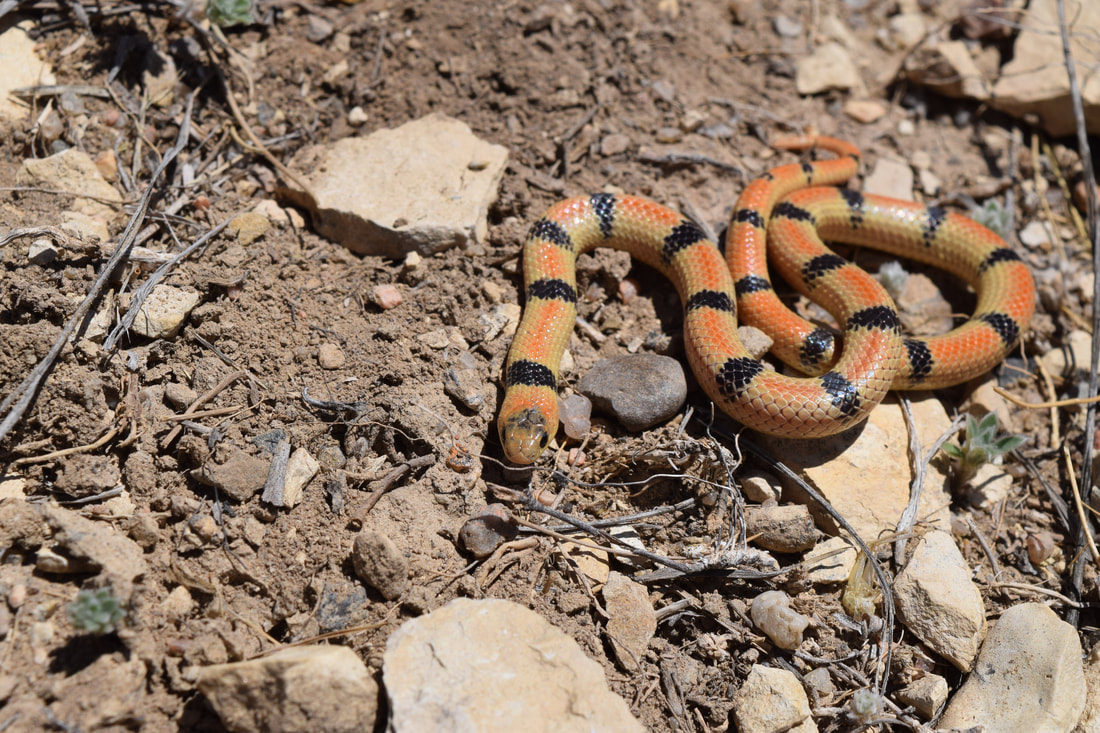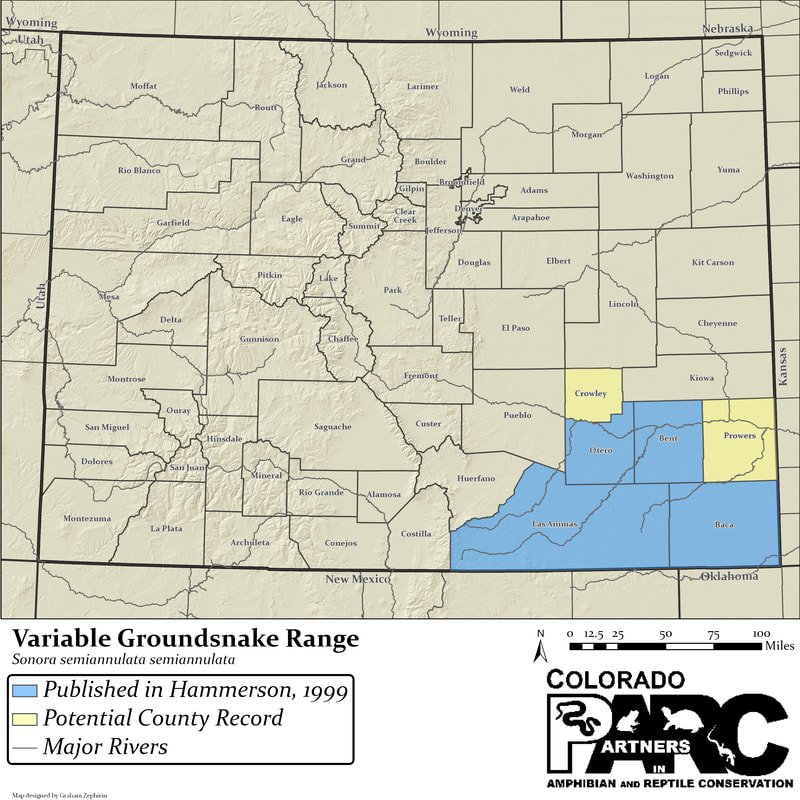|
Identification:
Distribution: In Colorado, this snake only occurs in the southeast corner of the state at elevations below 5,500 feet (1,675 m). (Hammerson 1999)
Activity: Surface activity is most likely between late April and September. This snake is almost exclusively nocturnal, but may be active in the early morning hours. Groundsnakes prefer conditions with cooler temperatures and higher moisture than average. (Hammerson 1999)
Conservation Status: Designated as a non-game species in Colorado. In Colorado, Great Plains Groundsnakes are locally abundant and their range will likely expand in the coming years. This snake’s habitat in Colorado is “... largely intact and not significantly impacted by activities that would threaten this species” (Hammerson, 1999).
NatureServe rank: G5 (Globally Secure), S3 (State Vulnerable). |
Habitat: Great Plains Groundsnakes almost exclusively inhabit areas of shortgrass prairie. More specifically, this snake can typically be found on hillsides with scattered rocks partially embedded in the soil, shale outcroppings, canyon bottoms, and sand blows. The rocks/cover this species can be found under typically have small holes or burrows that allow access to cooler temperatures and higher moisture levels.
(Hammerson, 1999) Diet: Great Plains Groundsnakes mainly consume spiders, centipedes, and scorpions, as well as a wide variety of insects. Their saliva is potentially toxic to small animals.
(Hammerson 1999) Defense: An instance of defense described a situation where “... the groundsnake gripped itself with its jaws, forming a small, complete loop that interfered somewhat with the predator’s attempts to engulf it”. (Hammerson 1999)
Natural Predators: Predators of this snake are known to include collared lizards, but also likely include other snakes, birds, and mammals. (Hammerson 1999)
|
Cited & Additional Resources
Hammerson G. A. 1999. Amphibians and Reptiles in Colorado. University Press Colorado, Boulder.
Hammerson G. A. 1999. Amphibians and Reptiles in Colorado. University Press Colorado, Boulder.
Account compiled by: Hayden Lewis
Reviewed by:
Last Updated: 1/30/2023 by Anthony Berardi
Reviewed by:
Last Updated: 1/30/2023 by Anthony Berardi



